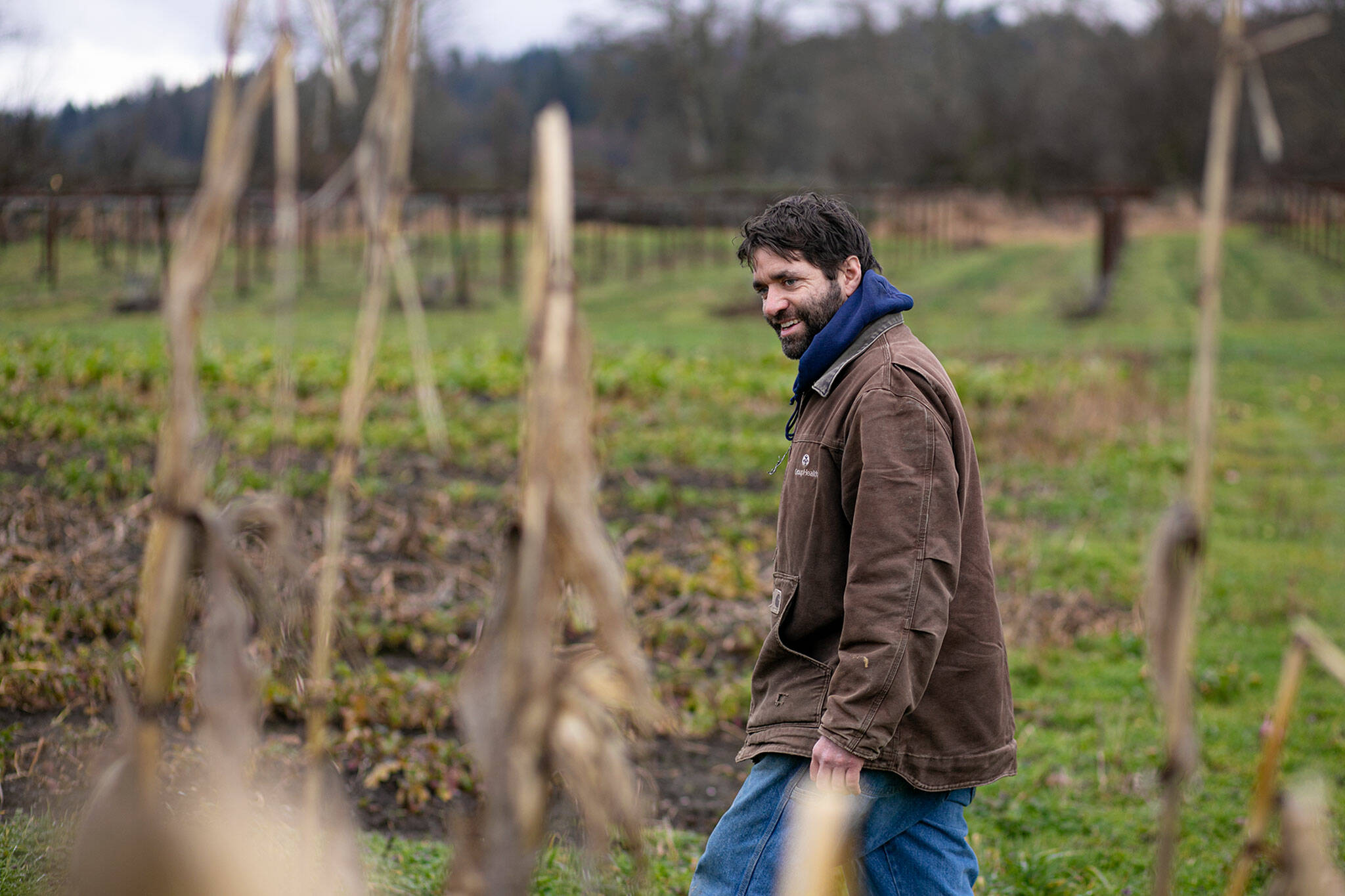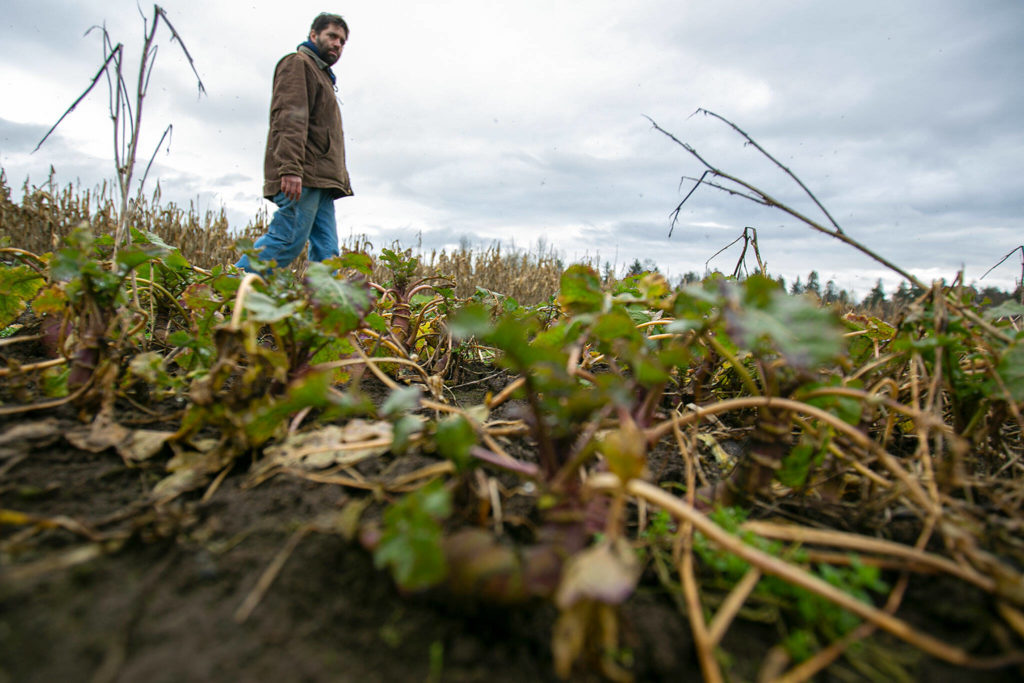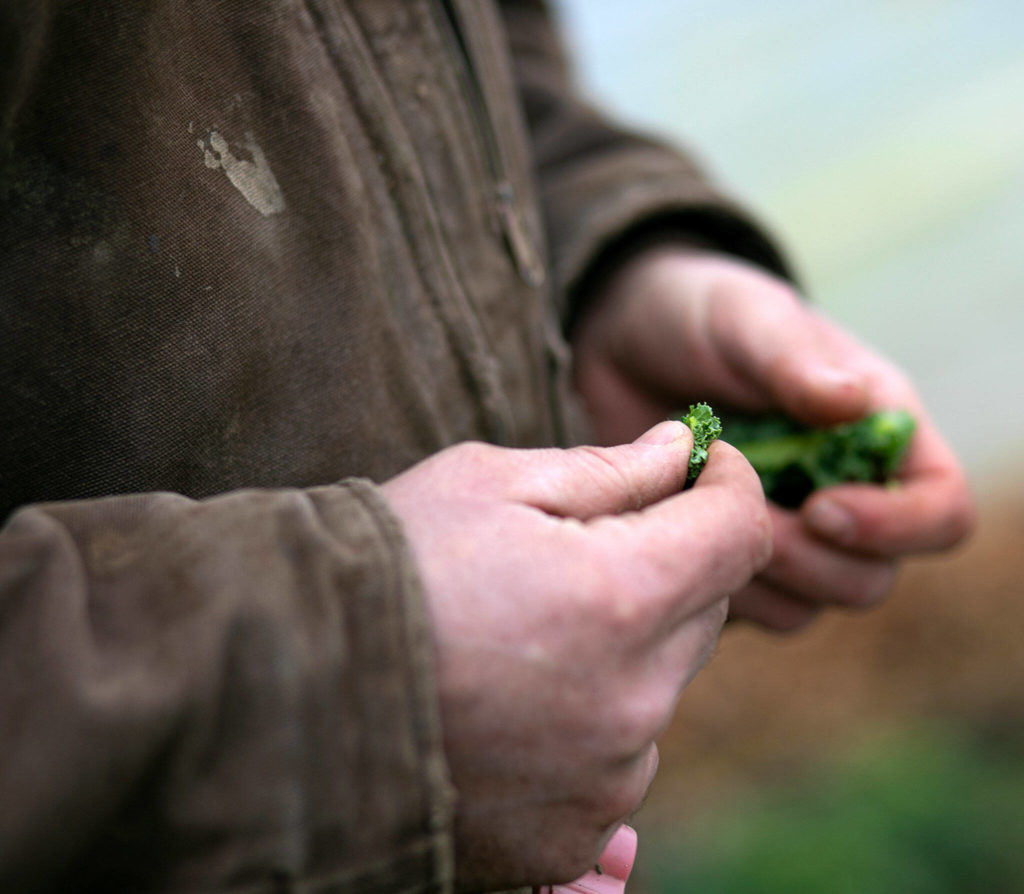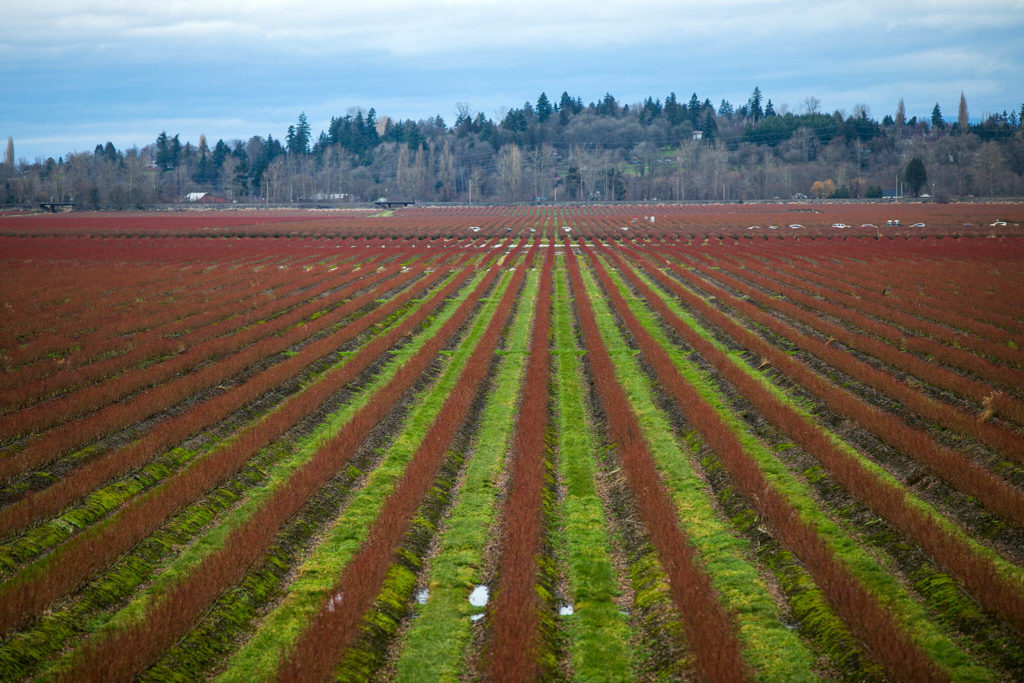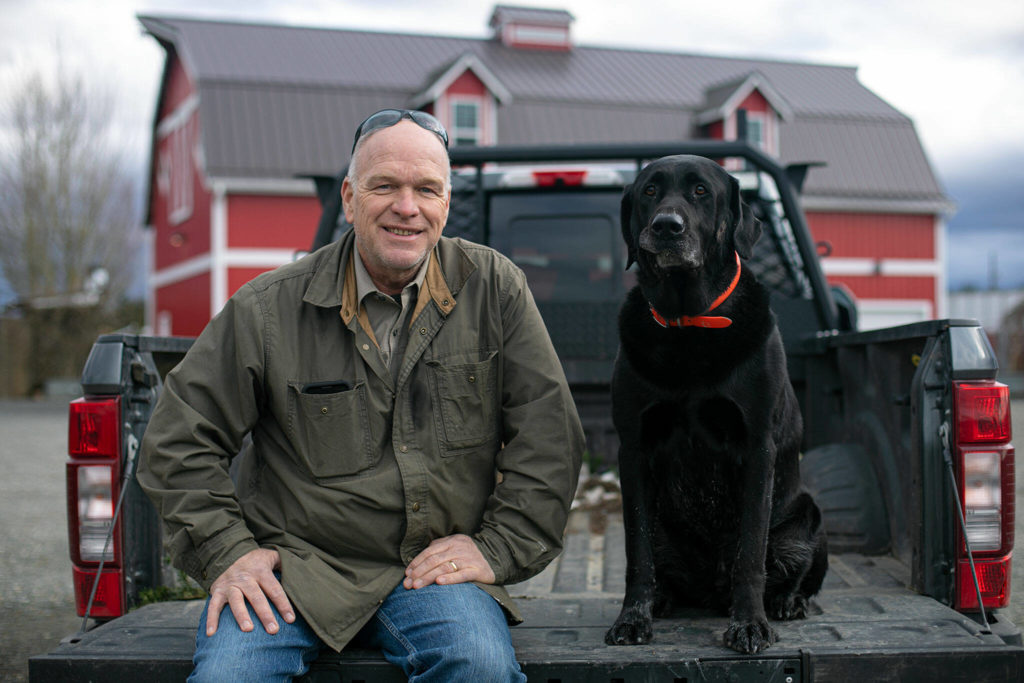SNOHOMISH — When Keith Stocker was a kid, many small family farmers in the Snohomish River Valley milked cows or grew peas and corn for the local cannery.
“Most of the agriculture was either in tune with the cycle of the dairy farm or with the cycle of the cannery,” he said. “That drove the agrarian clock.”
Today, the county’s $158 million per year agriculture industry looks far different, said Stocker, 58.
In his pickup truck with his black Labrador retriever Tango in back, Stocker took a reporter on a two-hour ride around the Snohomish River Valley, one of two major agricultural centers in the county. He’s a fourth-generation farmer who runs Stocker Farms and Mountainview Blueberry Farm.
As he drove, he explained how dairy farms were once abundant.
In 1969, there were 337 dairies in Snohomish County, according to U.S. Department of Agriculture historical data. Today the county has 22 state-licensed dairies.
Statewide, the number of dairies has fallen from about 1,700 in 1996 to 330, according to the Washington State Dairy Federation. Meanwhile, the cows per farm have increased, according to the industry group.
Stocker said his grandparents milked 32 cows — a modest herd. Today, a small dairy would struggle to compete with a farm milking 2,000 cows, he said.
“Economy of scale comes in — you have to be big,” he said.
Other farms have moved in. A Canadian blueberry grower now owns a large swath of the valley.
Yet farms under 10 acres are driving most of the farm growth in Snohomish County, the USDA’s Census of Agriculture in 2017 showed. From 2012 to 2017, the number of farms grew from 1,438 to 1,558, of which 99 were under 10 acres, according to the survey done every five years.
“Now it’s new generations and new people on smaller pieces of ground that are making it work,” Stocker said.
He said many Hmong flower farmers have taken the place of dairies. Hmong people came to the United States as refugees in the 1970s and have sold flowers at the region’s flower markets since 1982, according to the Hmong Association of Washington.
Of 2,774 farmers counted in 2017 in Snohomish County, 871 were new and beginning farmers, 319 were military veterans and 57 were of Hispanic or Latino origin, according to the Census of Agriculture.
About 48% of all farmers in Snohomish County were women, a higher percentage than both statewide (42%) and nationwide (36%).
As he drove, Stocker pointed out nearby farms: a turf grass grower and a wholesale tree nursery, both thriving amid a housing boom and demand for landscaping.
Agriculture is one of the county’s top industries by dollar volume, second only to aerospace.
‘The soil’
The Snohomish River Valley was once “bucolic,” Stocker said. Traffic was sparse. He drove a tractor down the road at 12.
“There was no concern about that being odd,” he said.
Now there is a 60-home development going up across the street from Stocker’s Mountainview Blueberry Farm. Stocker sees booming suburbs as a “double-edged sword.”
The downsides? Increased traffic and water runoff. The upsides? More potential customers.
“I try to embrace that change,” he said.
Stocker earned a degree in civil engineering from Washington State University. He worked in the San Francisco Bay area before returning to Snohomish County in the late 1990s to take over his parents’ farm.
Today the family business primarily earns income by bringing people to its farms: U-pick blueberries and sunflowers in the summer, a pumpkin patch and a corn maze in the fall, Christmas trees in the winter.
Six farms host the annual Festival of Pumpkins, which draws an estimated 200,000 people a year. On its website, Stocker Farms promises everything from hay rides to steer roping to pumpkin tetherball at the fall festival.
“Agritourism in the Snohomish Valley is big,” said Linda Neunzig, agriculture coordinator for Snohomish County.
Agritourism is any activity “on a working farm or ranch for the enjoyment and education of visitors,” according to a definition from the University of California Davis.
Neunzig said former dairies are transitioning to tourism and education, rather than sell off their land. In turn, farmers stay in business and more farmland is saved from development, she said.
She said farmers doing agritourism must actively farm under county regulations.
“You can’t just come in and buy a barn and say I’m going to do weddings in it,” Neunzig said.
She said helping farmers stay profitable protects food-producing land. For example, a corn maze could be replanted in the future with sweet corn, she said. If it is paved over, it will never be farmland again.
“The soil is always going to be there,” she said. “Whether it’s growing pumpkins for kids to carve or food that goes on your plate.”
‘You can only sell so many cabbages’
Vince Caruso caught the farming bug in 2008 while working as an agricultural educator. He’s part of a new generation of farmers here.
While in their early 30s, Caruso and wife Anna Caruso planted a garden at their home southeast of Snohomish and started selling the produce from it.
Caruso Farms now grows 10 to 15 acres of mixed vegetables and berries a year, Vince Caruso said. The farm uses organic practices, meaning no synthetic fertilizers or pesticides.
Farmers markets, community-supported agriculture (CSA) subscriptions and a farm stand have been primary sales channels. Typically, selling direct to customers increases the value of crops.
Caruso said the farm has recently sold more produce wholesale, such as to restaurants and food banks.
“You start getting to a point where you can only sell so many cabbages at the farmers market,” he said.
At 42, Caruso joked he isn’t a young farmer anymore. The USDA might have a different view. The average farmer in Snohomish County is about 57, according to the 2017 Census of Agriculture.
“I think I’m helping (bring) that median age down,” Caruso said.
Farmland is in high demand here, with foreign investors buying up more U.S. farmland in recent years.
Stocker pulled off into a field, where blueberry bushes, bright red in winter, stretched far into the distance.
These fields are owned by Golden Eagle Farms. The Canadian company did not respond to an email request for information about the size of its farms in Snohomish County, but according to its website, the company grows 3,500 acres of blueberries in the Pacific Northwest and produces more than 25 million pounds of blueberries each season.
Golden Eagle Farms is part of Aquilini Investment Group, which has divisions in farming, food and hospitality, entertainment and renewable energy. Notably, it owns the Vancouver Canucks NHL team, Rogers Arena and 48 Pizza Hut restaurants in British Columbia, its website states.
Stocker said the land sat vacant for a decade before Golden Eagle Farms took it over.
“I am thrilled that Golden Eagle has taken what had been formerly fallow ground and put it into production,” he said.
Just minutes away is Stocker’s nine-acre Mountainview Blueberry Farm.
The farm charges $3.15 per pound of U-Pick blueberries, he said. In 2020, if the farm had sold its berries to a processor, it would have received 78 cents per pound, according to the USDA’s Agricultural Marketing Resource Center.
“If you’re a small acreage, you get as much as a retail price as you can,” Stocker said. “You might do that with a farm stand, a CSA, going to the farmers market, or by bringing people onto your farm.”
‘I can’t find radicchio’
Land prices, labor, regulations and climate change. These are just some of the challenges farmers face today.
Farmland used to be $1,000 an acre, Stocker said. He estimates it’s $12,000 to $15,000 an acre in Snohomish County these days, and more expensive the farther north you go.
Land values have skyrocketed, similar to other real estate in the region. Caruso said demand for recreational land — for hunting and fishing, for example — has pushed up land costs even more.
“That is a real hindrance for someone who wants to farm,” Caruso said.
He added his biggest challenge is hiring and paying workers.
“It’s hard to pay people a good wage, and that’s important,” he said. “Labor that is under $25 an hour — there’s a lot of competition.”
Farmers have a new labor rule to comply with this year.
The measure, passed by the Legislature in 2021, requires farmers to pay overtime to their workers. This year, workers will get overtime pay after 55 hours a week. In 2023, they will get overtime after 48 hours, and in 2024, after 40 hours.
Farm groups opposed the rule, arguing it would make farmers less competitive because farmers in other states don’t have to pay workers overtime. But farmworker advocates said it would end a longtime exemption that was unfair to agricultural workers.
This year, farmers criticized a bill requiring buffers on the edges of rivers, streams and waterways. Gov. Jay Inslee requested the bill to boost salmon recovery, and it was supported by tribes and environmental groups.
Stocker stopped at several farms along the Snohomish River, showing the possible impact of the legislation. He said he would lose 75 acres out of 200 if he had to maintain buffers.
His main issue is that farmers weren’t consulted.
“We weren’t a part of the conversation that drafted it,” Stocker said. “It seems fairly obvious that the landholder should be a stakeholder in that conversation.”
The buffer bill died in committee, though a revised version may be back next legislative session.
Neunzig said she also worries about how extreme heat and weather are impacting farms.
Despite challenges, there is reason to be optimistic, she said. While dairies have declined, farmers have shifted to growing produce and commodity hay, for example, she said. Hay is the top crop in Snohomish County by acres.
“People want to come here and farm, and want to be a part of the ag community,” Neunzig said. “That’s really exciting to me.”
Recently, Caruso said, he had a conversation with someone who said, “I can’t find radicchio.”
He believes there is a market for unique crops, like the bitter-tasting, reddish-purple winter vegetable.
“There is a group of restaurants dedicated to buying local and small-scale,” Caruso said.
Similarly, Stocker believes farmers will find success in niche markets, where they can earn the full retail price for their crops.
“The niche farms,” he said, “are definitely the ones that are going to be the most economically viable into the future.”
Jacqueline Allison:
Talk to us
> Give us your news tips.
> Send us a letter to the editor.
> More Herald contact information.
